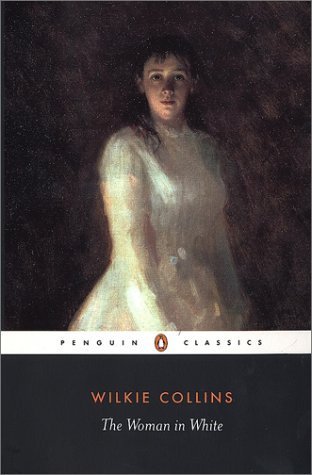
Even though I have stated this in practically all of my reviews this semester, I’ll reiterate: I love fall. I love fall books that drop me right into the wonderful world of autumn in both cozy and spooky contexts. With this paradigm in mind, I can safely say that “The Woman in White” by Wilkie Collins falls firmly into the spooky category in the absolute best way.
As I wittily noted in another book reviewing endeavor of mine, Collins’ novel is an old one and a long one. However, in no way should this deter you from giving this drama-fest of a novel a read. “The Woman in White” was part of the Victorian creation of the “sensation novel” — a novel written to be intentionally melodramatic with the primary goal of reader enjoyment. This book checks off all the boxes of a great sensation novel and is dramatic, fun, entertaining and gloriously ridiculous from the first page.
The novel begins from the perspective of art teacher Walter Hartright, who is offered a job teaching two half-sisters at their historic family estate, the Fairlie estate, in the English country. After he accepts the position, he meets a ghostly “woman in white” on his way to the house, who is gone before he can decide whether she is real or a phantom.
Once Walter arrives at the Fairlie estate, we are introduced to many of our main players in this brilliantly vivid ensemble cast. In addition to Mr. Fairlie, an incompetent hypochondriac who refuses to take responsibility for anything in his own home, we meet the sisters who Walter is sent to teach: Laura Fairlie and Marian Halcombe.
Laura, on the surface, is your traditional beautiful, innocent, generic Victorian woman. But as you read, you realize that she is not always so shallow. She is one of those characters that drastically grows on you, and her interactions with Walter are pieces of the text that I particularly enjoy.
Marian is the highlight of “The Woman in White,” and the section told from her perspective is my absolute favorite part of the narrative. She is sharp and perceptive, unafraid to do whatever she needs to support her sister, no matter how many curveballs the plot throws her way. In so many ways, she is the heart and driving force of the novel’s story. The section from her perspective had me racing to turn the pages, and when I first read the novel, I wished that the entire book was from her point of view.
However, upon both reflection and a reread, I realize that the multiple narrative perspectives are so integral to what “The Woman in White” is able to achieve: some of the most complex, colorful and interesting characters I have ever read about.
In addition to Walter and the sisters, we also get to know suspicious and unsettling Sir Percival Glyde, whose presence you question from the moment he is introduced. And yes, he is just as pretentious as his name suggests.
The enigmatic highlight, however, is the theatrical and oh-so-entertaining Count Fosco. Trust me when I tell you that you have never, ever read a character quite like this man, and every single time he is present in a scene, he is all you can think about. I don’t want to give too much away, but to me, Count Fosco is an absolute marvel of a character who is incredibly well done.
“The Woman in White” is genuinely one of the most gripping and worthwhile classics I have ever had the pleasure of reading, and if you want a book with pseudo-spooky vibes that will have you practically ripping the pages to find out what happens next, Collins’ tome is the one for you.


























































































































